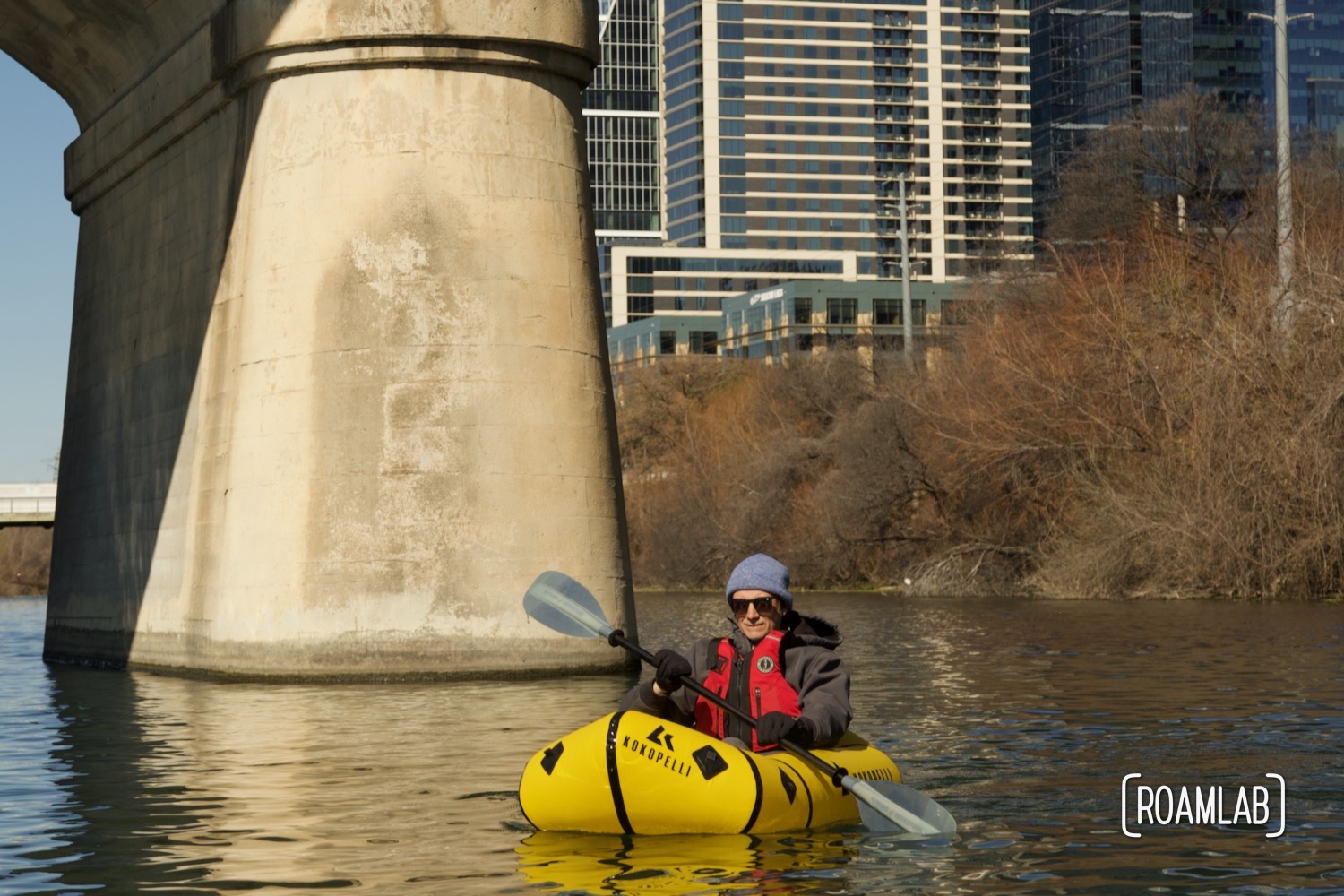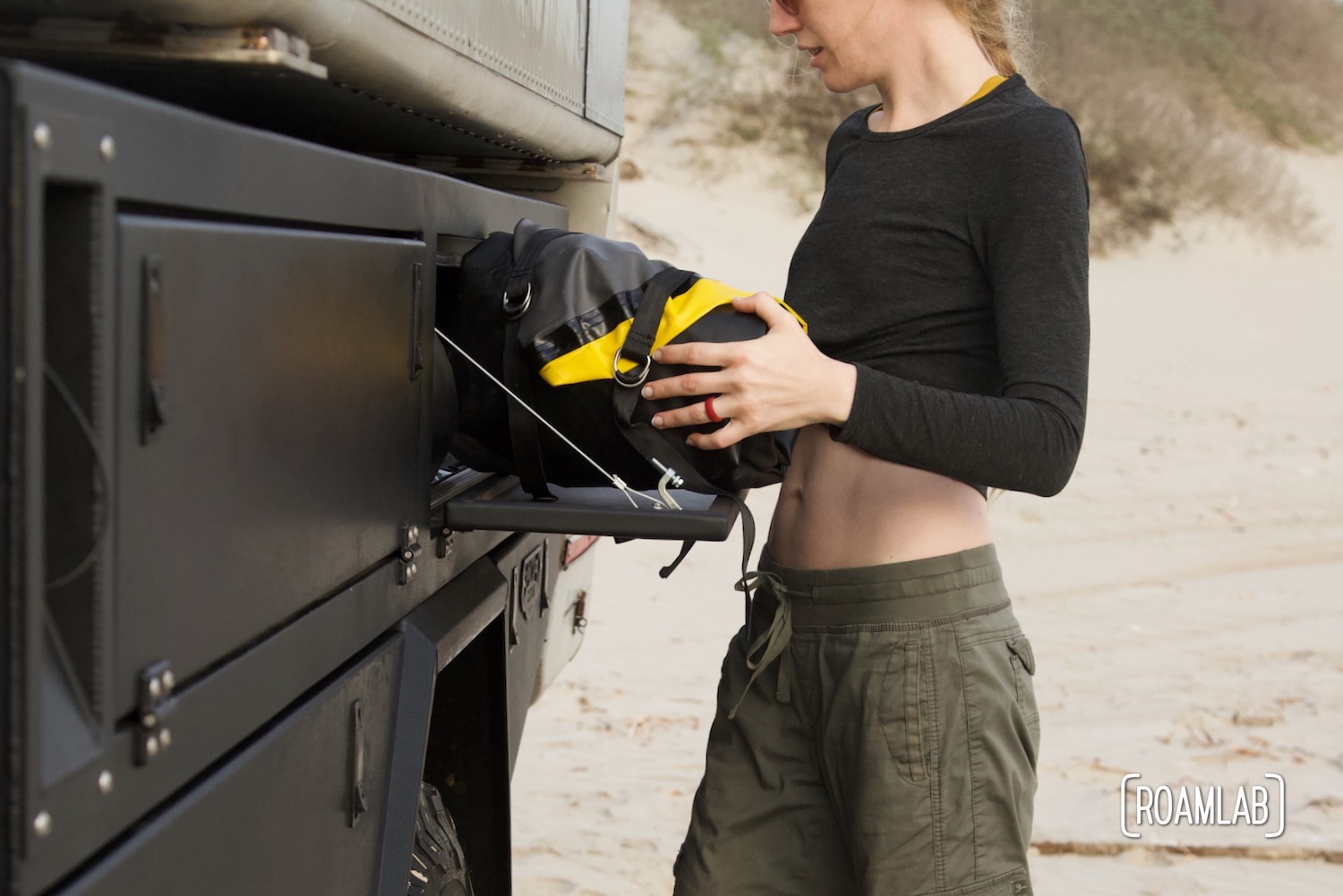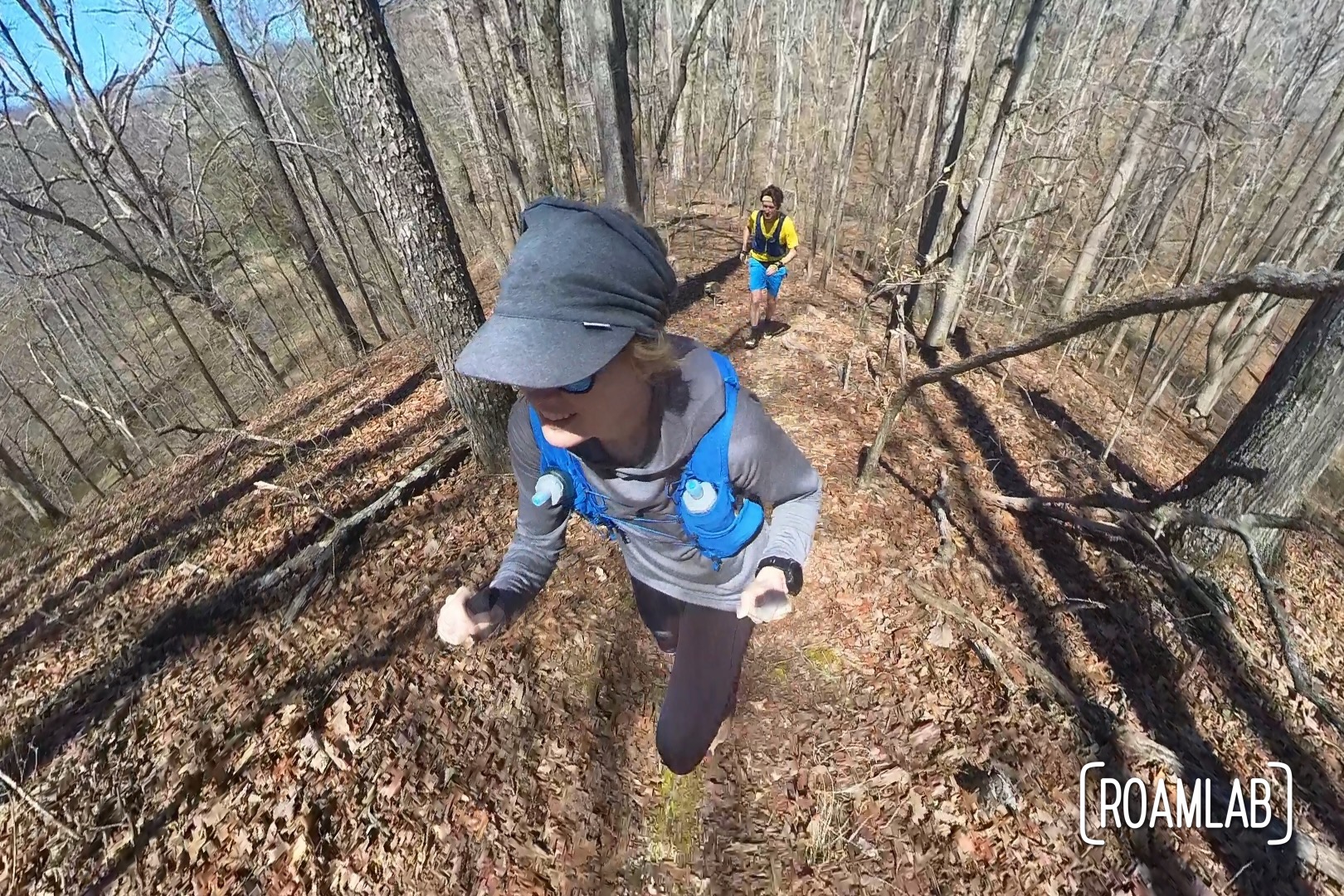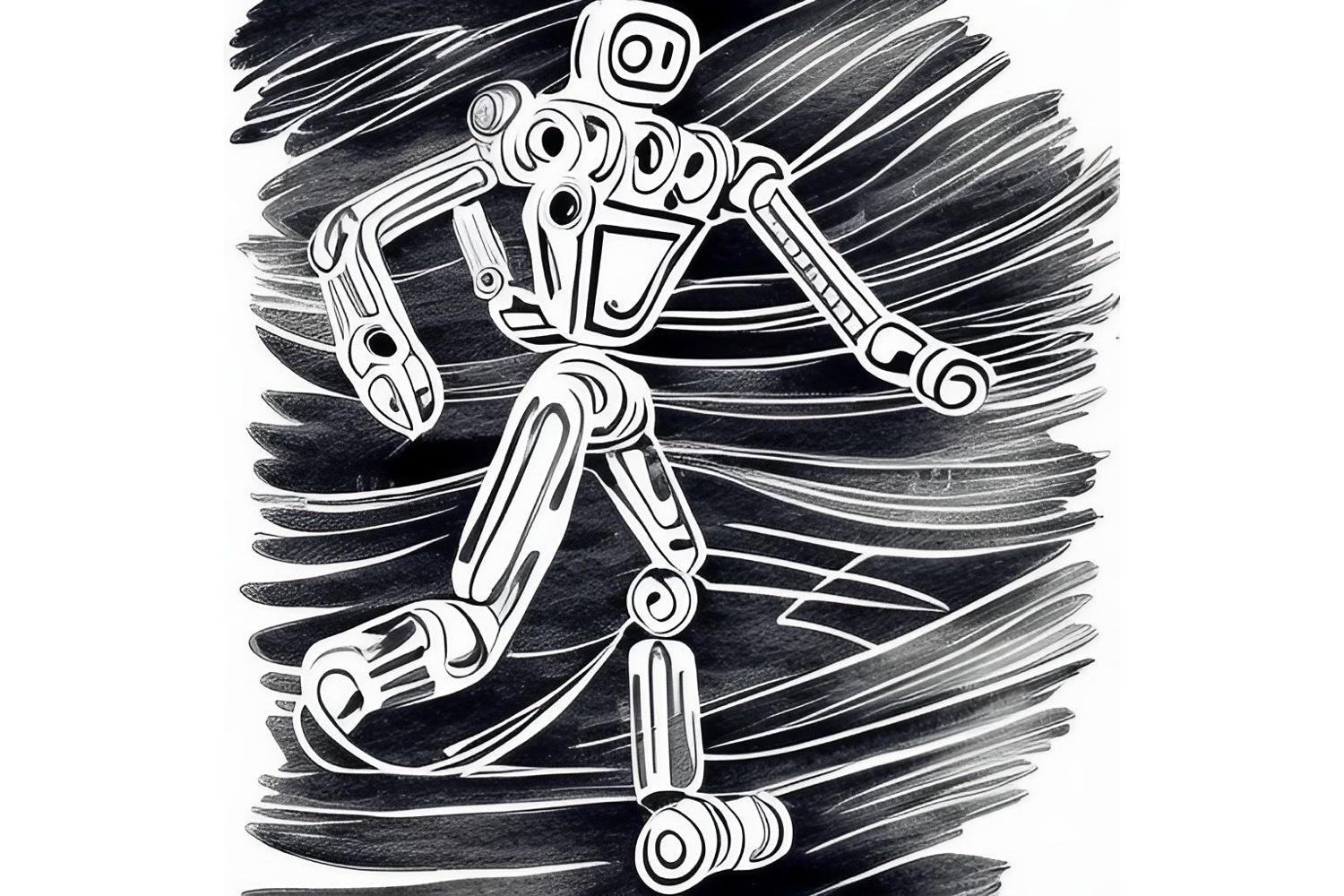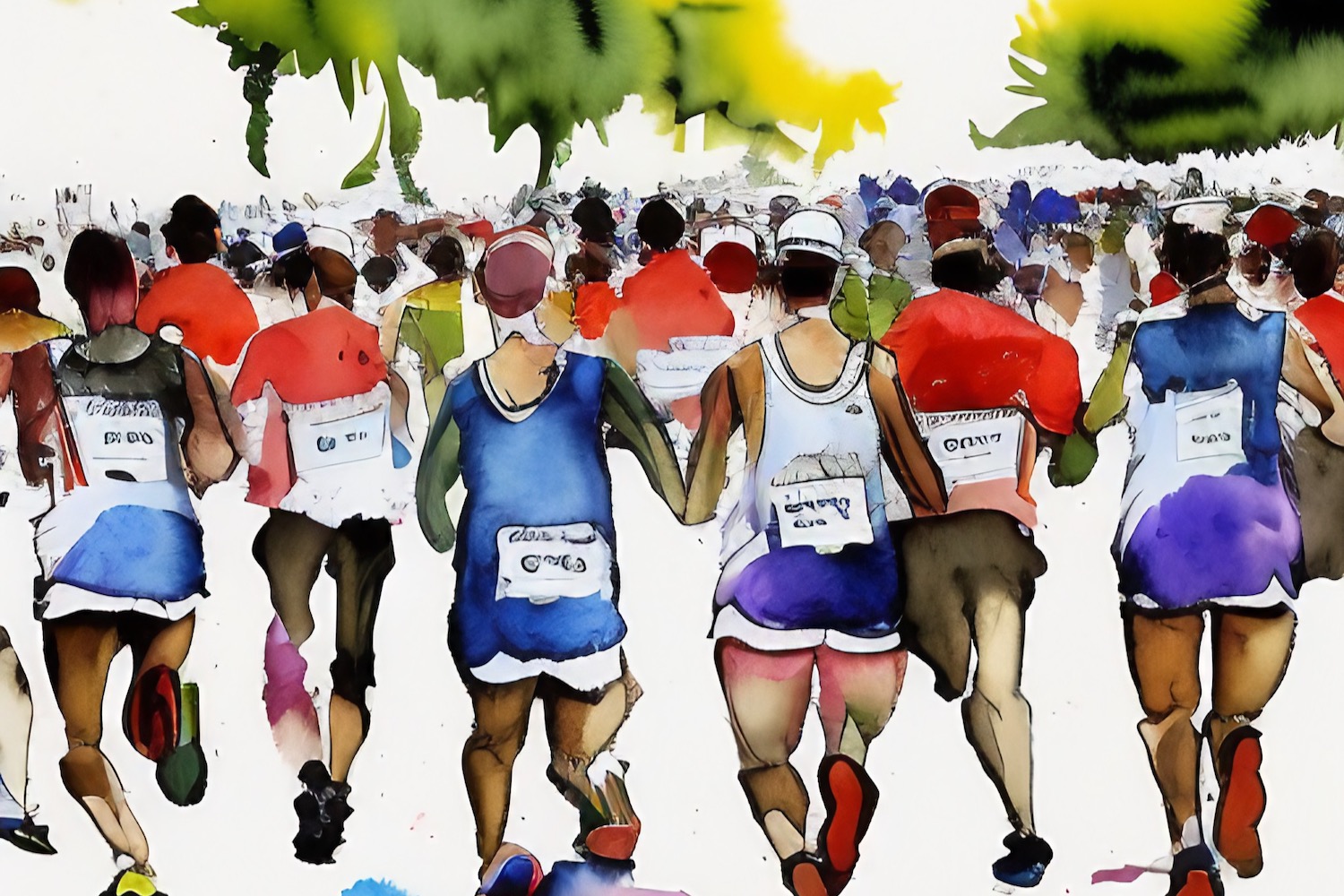
My First Marathon
The alarm springs to life at 4:30 AM. Normally, this would be an absurdly early time for us to wake up. But for the past week, we’ve been progressively shifting out bedtime and wake-up time earlier and earlier. Everything I do today will be the product of months of planning and training because today is my first marathon.
I turn off the alarm and roll out of bed. First things first: I head to the refrigerator and pull out the outs and fruit I prepared the night before and now set on the stovetop to warm. Marathon lesson one: prioritize time for a leisurely breakfast.* Those calories could be what pull us through in the final miles.
While breakfast warms up, I down a glass of soda. For most people, this would probably be a mug of coffee but lesson #2 remains the same: start the morning with some caffeine to jump-start our digestive tract and hopefully have any necessary bowel movements before we start our run. The goal is to not waste time at a bathroom stop between the start and finish line.
We take our time eating a large bowl of oats, nuts, seeds, and fruits. I budgeted 20 minutes to eat while mentally running through our to-do list. In this moment of calm before the storm, I remember where the chafing lube stick is stored. Excellent.
Now we have an hour to let the food settle before we head out the door to the start line. I get dressed in the sports bra, running shorts, and long-sleeved shirt I had set out the night before. I pack my little Fanny pack with five 100-calorie gels and two tissues. Lesson #3: nothing new on race day. My shoes, clothes, and nutrition are all tested from past long runs.
Oh, and a surprise lesson #4 that I picked up on our last long run when I desperately dashed into a portajohn without toilet paper: bring your own. In this case, I pack tissues as they can do double duty.
I pin our bib numbers to our fronts, do a last rundown of our to-do list (including my last bathroom run with full plumbing before the race), and we move everything we need to the truck cab.
I anticipated traffic, but the backup for the event parking lot stretches to the freeway off-ramp. The stop-and-go crawl eats up the time I had allotted for a leisurely walk to the start line. Instead, we take a light trot, stopping at an empty portajohn for one last acquiescence to nature’s call. My provisional tissues immediately come in handy.
By the time we reach our coral at the start line, we only have a few minutes to stretch while chowing down a last-minute energy waffle before the starting pistol rings out and thousands of runners surge to the start line in a slow-motion tidal wave.
We are more than just swept up by the tide of runners, we are propelled. More than just keeping pace, we quickly find ourselves darting around slower runners. A few days earlier, we had adjusted our official finish time target to 4 hours and were advanced into an earlier starting corral accordingly. Now I realize we had underestimated our pace. Lesson #5: don’t underestimate your pace. The further back we are in the pack, the more energy we waste trying to pass the dense pack of slower runners at the start. Yes, we could have just kept pace with our pack until the crowd had thinned further down the race, but we did not want to waste the energy and momentum of the start.
While the first few blocks run downhill, the course quickly turns uphill and we continue passing runners as our hill training kicks in. There’s a lot of wisdom around warnings not to burn out early by running too fast out of the gate. We have 26 miles ahead of us and the harder we run now, the harder it will be to run later. So I want to acknowledge that but then note that our first mile was the slowest mile of our entire marathon. While we are passing a lot of runners that are ostensibly running our pace or faster, we start and maintain a pace in line with our training.
I’ll be frank: as much as Chris was determined that we would run a sub-4-hour marathon, I am completely open to the possibility of slowing down. This is our first marathon, and any finish will be a personal record. I am perfectly happy with a 4:30 finish. But even within the first few miles, we can see our training paying dividends. The first half of the course is the most hilly. We cruise down a prolonged descent, anticipating the hilly ascent to follow but don’t lose any time as we climb back up the steepest stretch of the race.
In preparation for the marathon, we biked/ran the course and can anticipate the output ahead. We are mentally prepared for the coming hills. I feel so confident by the seventh mile that when we pass a cheer crew passing out shots to the runners, I take one. I’m 50/50 on whether there is actually alcohol in that shot. I can taste thick syrupy pineapple and coconut. One thing I do know: there is lots of sugar.
Around the 10-mile mark, we split from the half-marathon runners and the real race begins. Without the crowd to dodge, we make our best time yet. I read that this stretch is often the holding pattern point. The initial adrenaline of the start is petering off and the knowledge of the long slog ahead is settling in. For me, though, the clear open road is liberating. This is some of the most bland but steady running of the race. Sure, we’re running through an industrial warehouse district with little to see, but with fewer runners to dodge, Chris and I run shoulder to shoulder.
Around the 17-mile mark, we make a couple of friends who are also on their first marathon. One is an experienced trail running on their first road marathon. The other has a half marathon under her belt and is taking on a full for the first time. We are all shooting for a sub-4-hour finish and we are all on track for it.
I don’t even fully appreciate how well we are doing until we hit the 20-mile marker and check my watch. We have been running for 2:57 minutes. At this point could run 10-minute splits and still come in with a sub-4-hour finish. But our pace is far better than that and Chris has no interest in drawing out the race any longer than necessary. He wants to surge forward, and I’m feeling fresh as we trot into untrodden territory. Each mile now is a distance we have never run before. Our longest training run was a 20 miler and we averaged 9:45 slits. Granted, that was a very hilly course. Most of what lies before us is relatively flat with three gentle hills.
Chris flirts with “the wall” at mile 23. Those with gas in the tank are now speeding up for a final sprint to the finish. We keep a steady pace. No, Chris is so badly off that we can’t keep going. But the final hill is a steady slog. Granted, I wonder if Chris is better than I perceive when he flies down the other side of the hill. But we settle back into a steady stride as the road levels out and we round the corner to the finish line.
And that’s when we see the race clock: 3:59:30. Where did the time go? With 30 seconds between us and our sub-4-hour goal, we sprint. We had planned to hold hands for that crossing point. But in the rush, the best we can do is cross together.
It’s only after we cross the line that we remember that the clock is based on the time when the first coral of runners crossed the start line. We were way back in corral 6. When we check the official times, we realize we had four minutes of leeway before our personal times crossed the 4-hour mark. But by that point, we are busy inhaling water and bananas. Chris collapses under a tree and I walk to the truck for dry clothes and flip-flops.
In the final accounting, I earned two blisters, one broken toenail, and one finisher medal.
* I got this one from The Runners World UK Podcast, Episode 217


